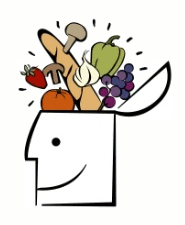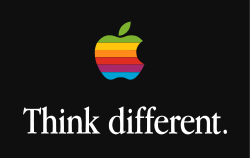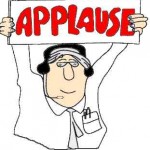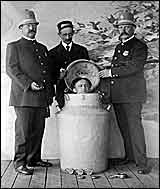 The Tostitos logo embeds two people partying with chips and salsa to make their brand festive and sexy, perhaps aided by other subliminal associations?
The Tostitos logo embeds two people partying with chips and salsa to make their brand festive and sexy, perhaps aided by other subliminal associations?
Can we be manipulated by marketers to buy?
Market researcher James McDonald Vicary wanted to find out, so in the summer of 1957 in Fort Lee, New Jersey, Vicary conducted an experiment. Over the course of six weeks, Vicary recorded the results of subliminal images flashed on screen during the presentation of the movie Picnic, starring William Holden and Kim Novak. Throughout the movie, the words “eat popcorn” and “drink Coca-Cola” were flashed on the silver screen for a mere 1/3,000th of a second. 45,000 people visited the theater in six weeks and Vicary was astonished at the results. Purchases of popcorn soared by 57.5 percent and Coca-Cola sales jumped 18 percent. The results were reported in the September 16, 1957 edition of Advertising Age, sparking widespread public outrage and paranoia about the study’s implications.
The hysteria was further fueled by the publishing that same year of Vance Packard’s influential book The Hidden Persuaders, which suggested that the public was being monitored and manipulated by marketers and advertisers without their conscious awareness or consent. A year later, an investigation by the CIA led to a ban on the use of subliminal flashes on movie and television screens. The public was now not only aware of subliminal advertising techniques but were reassured that laws were in place to protect them from corporate and hollywood mind control.
There was only one problem: Vicary’s experiment was a hoax. He admitted as much in a 1962 interview with Advertising Age, stating that the original market research study was “a gimmick” and admitted that the amount of data collected was “too small to be meaningful.” But the damage to public opinion had been done and the urban myth lives on, perpetuated by blogs, conspiracy theorists and even Hollywood, with movies like “The Manchurian Candidate” and “Inception”.
The word “subliminal” has latin roots: “sub” meaning “below” and “limen” meaning “threshold of consciousness”. Ironically, even though a bogus market research study in the 1950s had the nation feeling unnecessarily anxious, today’s studies in neuroscience have disturbing implications for consumers. As it turns out, most of the day to day decisions we make happen below our threshold of consciousness. So while we worried that corporations might be controlling our minds in the fifties, we should be wondering if we are ever completely in control. That’s because we believe that our conscious or rational mind is in control because it’s the part of our mind that “talks” to us. It’s the voice inside our head that speaks as we silently read the words of this blog or mull over a decision.
Neuroscience suggests that we remain happily unconscious most of the time.
In 2008, a group of scientists led by a researcher from the Max Planck Institute for Human Cognitive and Brain Sciences in Leipzig, Germany, used brain scans to accurately predict participants’ decisions seven seconds before they consciously made and voiced their decisions. The researchers reported in Nature Neuroscience in April, 2008 that “Many processes in the brain occur automatically and without involvement of our consciousness.
This prevents our mind from being overloaded by simple routine tasks. But when it comes to decisions, we tend to assume they are made by our conscious mind. This is questioned by our current findings.”
Marketers, aided by dozens of research findings in neuroscience made in the past ten years, have become keenly aware that we often make mostly unconscious, snap decisions first, then use the “voice” of our conscious mind to validate and rationalize our decisions. The implications are as fascinating as they are unsettling. We’ll explore some of these in the coming weeks…


 If you want to improve your focus and efficiency, here’s food for thought: eat a balanced breakfast.
If you want to improve your focus and efficiency, here’s food for thought: eat a balanced breakfast.





